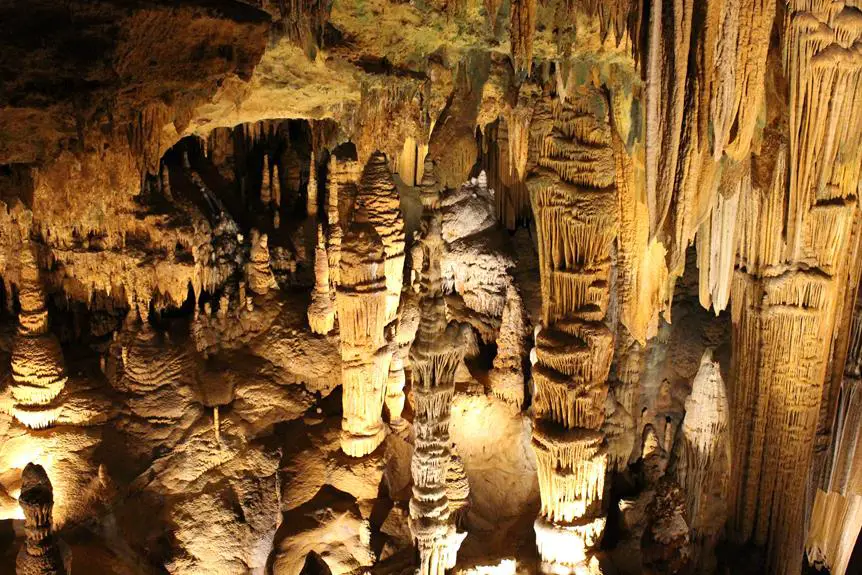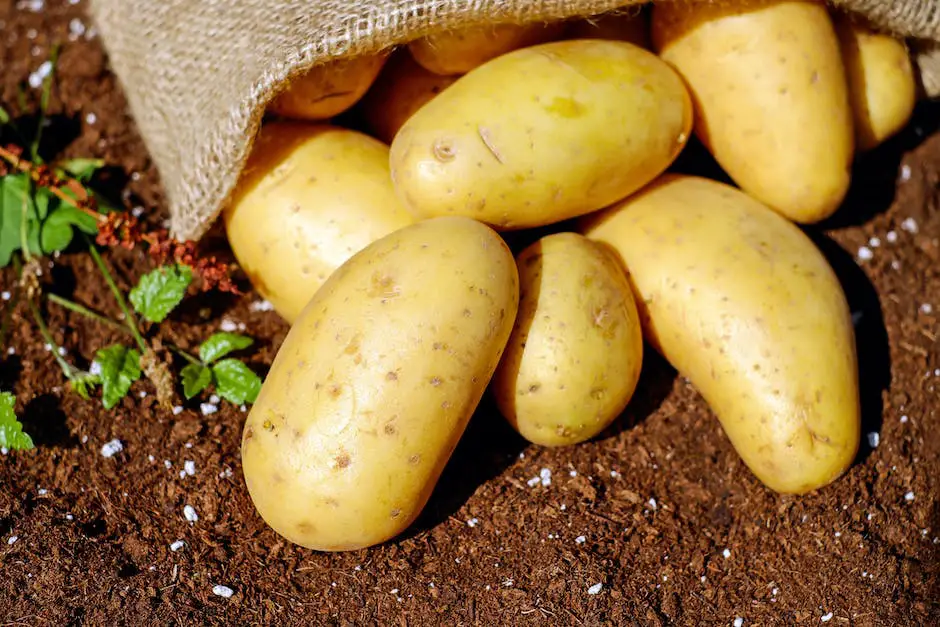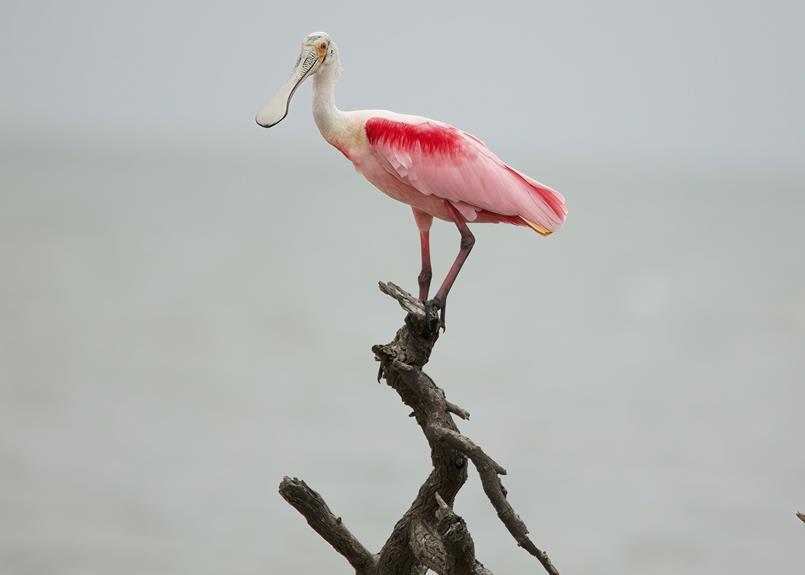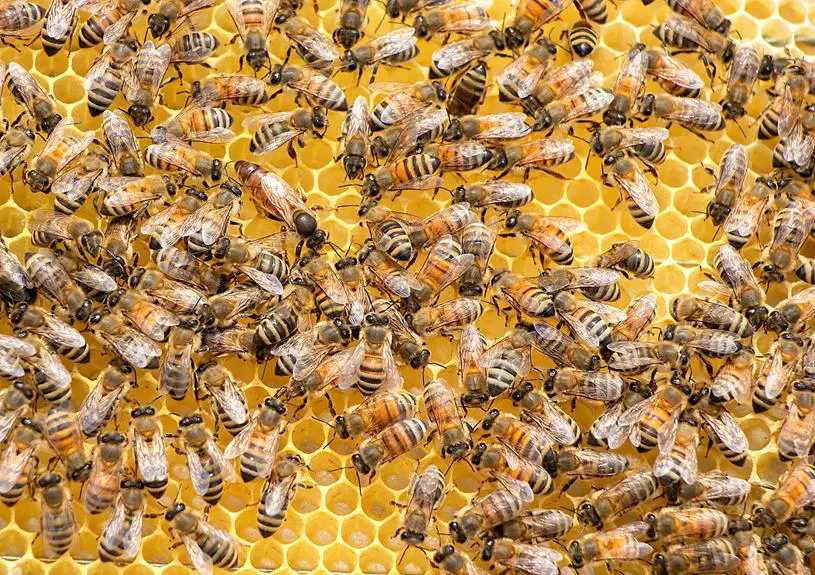In Virginia, hornets are a common sight, buzzing through gardens and parks. These stinging insects, like the European Hornets and Bald-faced Hornets, can cause quite a stir. But they're not the only ones to watch out for.
Eastern Yellowjackets, Northern Paper Wasps, Red Velvet Ants, and Great Golden Digger Wasps also call Virginia home. It's important to know the different types of hornets in the area to stay safe while enjoying the outdoors.
Key Takeaways
- European hornets and bald-faced hornets are commonly found in Virginia.
- Eastern Yellowjackets are known for their aggressive behavior and painful stings.
- Northern Paper Wasps build small, open-celled nests made from plant fibers.
- Red Velvet Ants are solitary insects and have one of the most painful stings among insects.
European Hornets
European hornets, also known as Vespa crabro, are a species of hornets commonly found in Virginia. These hornets are known for their large size, measuring up to 1.5 inches in length. While they may look intimidating, European hornets are actually quite beneficial to the ecosystem. They prey on a variety of insects, including flies, bees, and other hornets, helping to control their populations.
However, European hornets can become a nuisance when they build their nests near human dwellings. Their nests are typically found in hollow trees, wall cavities, attics, or sheds. When threatened, these hornets can become aggressive and sting, causing pain and discomfort.
To manage European hornet populations and minimize the risks they pose, hornet control measures can be implemented. It's important to identify and locate the hornet nests to effectively eliminate them. This can be done by observing their flight patterns and following them back to their nest. Once the nest is located, professional pest control services can be contacted to safely remove it.
Bald-faced Hornets
Bald-faced hornets, also known as white-faced hornets, are aggressive insects that can be found in Virginia. They build large paper nests in trees, shrubs, and on buildings.
Understanding their habitat and behavior, their sting and venom, as well as effective control and prevention methods, are crucial in dealing with these hornets.
Habitat and Behavior
One species of hornet commonly found in Virginia is known for its distinctive black and white coloration and aggressive behavior. These hornets, known as bald-faced hornets, have a wide habitat range that includes forests, woodlands, and suburban areas. They build their nests in elevated locations such as trees, shrubs, and buildings, providing protection from predators.
When it comes to foraging patterns, bald-faced hornets are opportunistic hunters. They primarily feed on nectar and sweet substances like fruit juices, but they're also known to scavenge for protein by capturing and consuming other insects. These hornets are highly social and work together to build and defend their nests, which can reach the size of a basketball. They're known for their aggressive behavior and will vigorously defend their nests if threatened, often stinging repeatedly.
It's important to exercise caution and avoid disturbing these hornets to prevent any potential harm.
Sting and Venom
The sting and venom of bald-faced hornets can cause significant pain and discomfort. When a bald-faced hornet stings, it injects venom into the victim's skin. This venom contains a mixture of chemicals that can trigger various reactions in the body.
While some people may only experience mild symptoms such as redness and swelling at the sting site, others may have more severe reactions. These can include intense pain, itching, and the formation of large welts. In rare cases, individuals may even experience allergic reactions, which can be life-threatening.
If stung, it's important to seek immediate sting treatment. This typically involves cleaning the area with soap and water, applying a cold compress to reduce swelling, and taking over-the-counter pain relievers. However, if venomous reactions occur or if the individual has a known allergy to hornet stings, medical attention should be sought immediately.
Control and Prevention
To effectively control and prevent bald-faced hornets, it's essential to implement proactive measures. Here are three effective hornet control methods to consider:
- Remove food sources: Bald-faced hornets are attracted to sugary substances, so it's important to keep food and garbage tightly sealed. Regularly clean outdoor eating areas and dispose of trash properly to prevent hornets from being attracted to your property.
- Seal entry points: Inspect your home for any cracks, gaps, or openings where hornets can enter. Seal these entry points with caulk or weatherstripping to prevent them from making nests inside your home.
- Use insecticides: If you have a bald-faced hornet infestation, consider using a hornet-specific insecticide. Follow the instructions carefully and apply the insecticide directly to the nest in the evening when the hornets are less active.
Eastern Yellowjackets
Eastern Yellowjackets, also known as Vespula maculifrons, are commonly found throughout Virginia. They are known for their aggressive behavior and painful stings. These social insects live in colonies and build their nests underground, often in abandoned rodent burrows or other small cavities. The nests are made from a paper-like material that the yellowjackets create by chewing up wood fibers and mixing them with saliva.
When it comes to their diet preferences, Eastern Yellowjackets are omnivorous and have a varied diet. They are scavengers and feed on a wide range of food sources, including insects, fruits, nectar, and even carrion. They are also attracted to sugary substances, which is why they can often be found near picnic areas or garbage bins.
Despite their aggressive nature, Eastern Yellowjackets play an important role in the ecosystem. They help control populations of other insects and serve as pollinators for various plants. However, their painful stings can pose a threat to humans, especially those who are allergic. It is important to exercise caution and avoid provoking these insects to prevent any potential harm.
Northern Paper Wasps
Northern Paper Wasps, also known as Polistes fuscatus, are social insects that can be found in Virginia. These wasps are known for their distinctive black and yellow markings, with some individuals displaying a reddish-brown coloration.
Here are three key characteristics of Northern Paper Wasps:
- Nest: Northern Paper Wasps build small, open-celled nests made from plant fibers, such as wood or paper. These nests are usually found in protected areas, such as under eaves, in trees, or in shrubs. Unlike other wasp species, the nests of Northern Paper Wasps aren't enclosed by a papery envelope.
- Diet: The diet of Northern Paper Wasps primarily consists of nectar and other sugary substances. However, they're also important predators of caterpillars, spiders, and other small insects. Adult wasps feed on nectar, while the larvae are fed with chewed-up insects brought by the worker wasps.
- Behavior: Northern Paper Wasps are social insects that live in colonies. Each colony is headed by a queen, who lays the eggs and controls the activities of the worker wasps. These worker wasps are responsible for building and maintaining the nests, foraging for food, and caring for the larvae. The colonies are annual, meaning they start anew every spring.
These fascinating insects play an essential role in pollination and pest control, making them beneficial to the ecosystem. However, if their nests are located near human activity, caution is advised to prevent accidental stings.
Red Velvet Ants
Red Velvet Ants, also known as cow killer ants, exhibit interesting behavior in their search for food and mates.
Despite their name, they aren't actually ants but rather a species of wingless wasps. Their sting is known to be extremely painful, earning them the reputation as one of the most painful insect stings in the world.
Red Velvet Ants can be found in a variety of habitats, including grasslands, forests, and even urban areas.
Velvet Ant Behavior
The velvet ant displays distinct behavior patterns that set it apart from other hornets found in Virginia. Its behavior is influenced by its unique life cycle and reproduction process. Here are three key aspects of velvet ant behavior:
- Solitary Nature: Unlike other hornets that live in colonies, velvet ants are solitary creatures. They prefer to live and forage alone, rarely interacting with other members of their species. This behavior allows them to avoid competition and potential conflicts.
- Defensive Mechanisms: Velvet ants are known for their painful stings, which they use as a defense mechanism. When threatened, they emit a high-pitched squeal and deliver a powerful sting. This behavior serves as a warning to potential predators, deterring them from attacking.
- Nocturnal Activity: Velvet ants are primarily active during the night. They emerge from their underground burrows to search for food and mates under the cover of darkness. This behavior helps them avoid predators and extreme temperatures during the day.
Understanding the behavior of velvet ants is crucial for ensuring their conservation and the safety of humans who come into contact with them.
Velvet Ant Sting
Velvet ants' sting is a potent defense mechanism that distinguishes them from other hornets found in Virginia. Their sting is known to be extremely painful, earning them the nickname 'cow killers.'
Despite their name, velvet ants aren't actually ants but rather a type of wingless wasp. They're most commonly found in sandy areas and grasslands.
The velvet ant life cycle begins with the female digging into the ground to lay her eggs. The larvae then emerge and feed on the eggs of ground-nesting bees and wasps.
As adults, velvet ants are solitary and primarily active during the day. They're known to be preyed upon by other insects, birds, and spiders. However, their sting serves as a powerful deterrent against potential predators.
Velvet Ant Habitat
The habitat of velvet ants, also known as red velvet ants, extends across various sandy areas and grasslands in Virginia. These unique insects can be found in the following locations:
- Forested areas: Velvet ants are known to inhabit forested areas where there's a combination of sandy soil and vegetation. The forest floor provides them with ample opportunities to find food and seek shelter.
- Open fields: These ants are also commonly found in open fields, especially those with sandy or loamy soil. The grassy areas provide them with a suitable environment for nesting and foraging.
- Coastal regions: Velvet ants can also be found in the coastal regions of Virginia, where sandy beaches and dunes provide them with suitable habitats. These areas offer the ants a rich source of food and nesting opportunities.
Understanding the velvet ant habitat is essential for identifying their presence in Virginia. By studying their life cycle and identification, researchers can gain valuable insights into their behavior and ecology.
Great Golden Digger Wasps
Great Golden Digger Wasps are a common species of hornets found in Virginia. These wasps have interesting nesting habits and a unique diet.
Great golden digger wasps are solitary insects that build their nests in the ground. They prefer sandy soil and create burrows that can be up to three feet deep. These nests serve as a safe place for the wasps to lay their eggs and provide food for their offspring.
When it comes to their diet, Great Golden Digger Wasps primarily feed on nectar, but they also hunt for insects to bring back to their nests as a source of food for their larvae.
In terms of mating behavior and life cycle, Great Golden Digger Wasps have a fascinating process. Males and females engage in a courtship ritual, where the male offers a gift of a dead insect to the female. After mating, the female searches for a suitable nesting site and begins constructing her burrow. She then captures insects, paralyzes them with her venomous sting, and lays a single egg on each immobilized prey.
Once the egg hatches, the larva feeds on the paralyzed insects until it completes its development and emerges as an adult wasp. This life cycle typically spans from spring to late summer, with the adult wasps dying off by fall.
Frequently Asked Questions
What Are the Physical Characteristics of European Hornets?
European hornets have distinct physical characteristics. They are large in size, measuring about 1.2 inches in length. They are typically brownish-red with yellow markings on their abdomen.
How Do Bald-Faced Hornets Contribute to the Ecosystem?
Bald-faced hornets, with their aggressive nature and distinctive black and white markings, may seem like a nuisance. However, they play a crucial role in the ecosystem by contributing to pollination and controlling pest populations.
Do Eastern Yellowjackets Pose a Threat to Humans?
Eastern yellowjackets can pose a threat to humans. Their stings can cause pain, swelling, and allergic reactions. In severe cases, anaphylaxis may occur, which can be life-threatening. It is important to exercise caution around these insects.
What Is the Nesting Behavior of Northern Paper Wasps?
The nesting patterns of northern paper wasps involve building small, open nests in protected areas. They go through lifecycle stages of eggs, larvae, pupae, and adults. These wasps are not considered hornets.
Are Red Velvet Ants Commonly Found in Virginia?
Red velvet ants, though not technically ants, are commonly found in Virginia. With their vibrant red color and painful sting, they have a significant impact on other insects in the area, serving as a natural predator.







